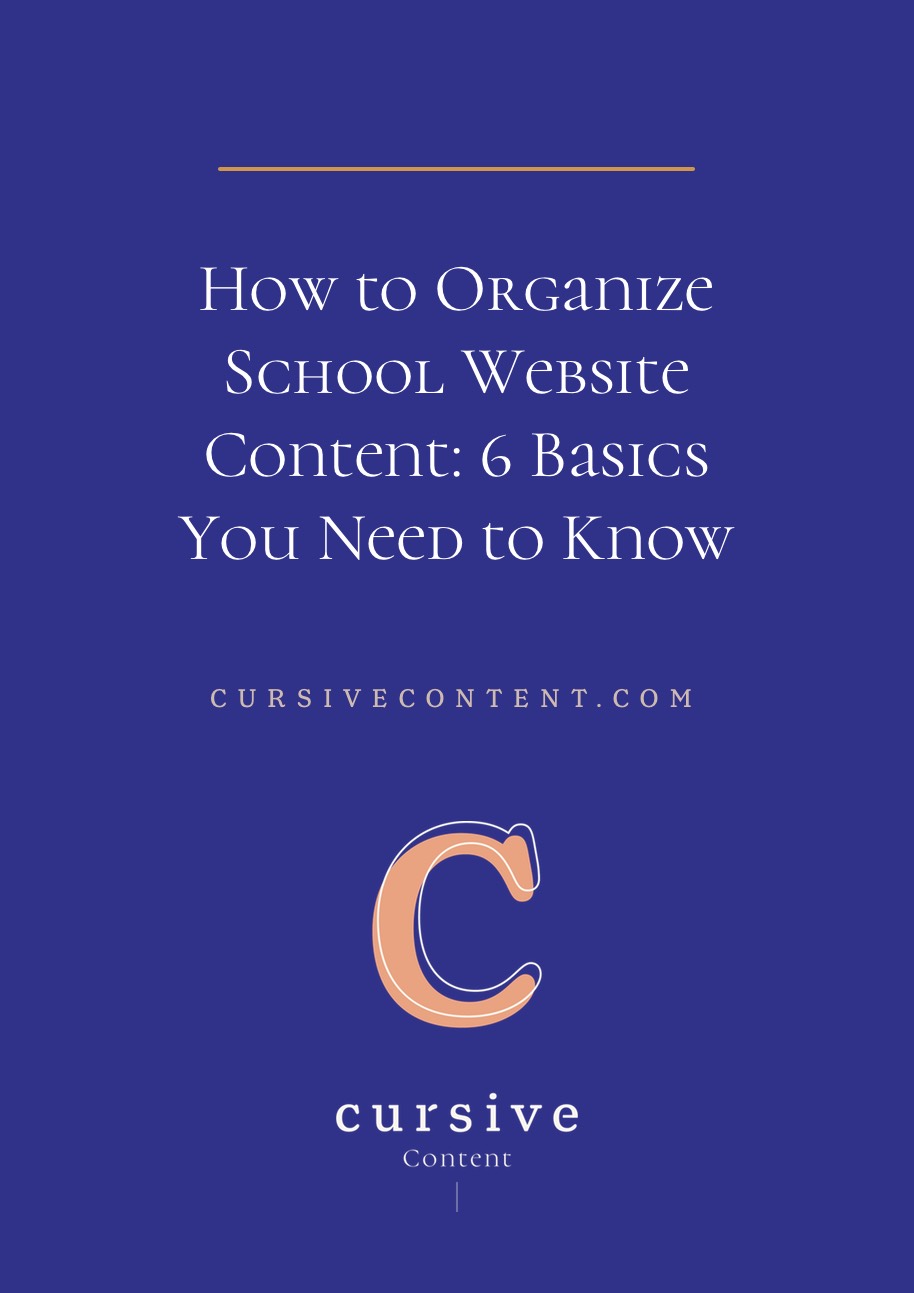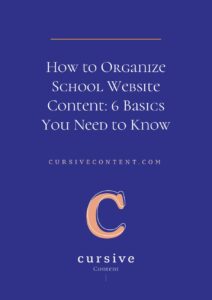
A website redo is a big task involving many ideas, lots of planning, and many, many meetings. Often, significant time is devoted to a new website’s appearance and not as much time to its structure.
Yet websites are one of a school’s most powerful and frequently used marketing tools. So if your website is hard to navigate and visitors can’t find the information they are looking for, it won’t matter if it’s pretty.
If you are creating, revamping or reevaluating your website, consider these simple yet often overlooked basics of website content organization:
Keep it concise
The simpler the website structure, the better. Consider the content that will go on each page. Is it necessary? Can it fit in elsewhere? Remove or consolidate pages when possible, and link to other related pages to help your audience reach related content.
Think like your audience
Find out what your audience wants to know, and make sure that information is prominent, both within the website navigation and within the page content itself.
Consider your website from an outsider’s perspective. If you find that you can’t be objective, then get a small group of students, faculty or staff to review the site structure. You don’t have to take all of their suggestions, but they might be able to spot problems with organization faster than someone on the inside.
Make it intuitive
Your visitors should not have to search hard for the information they are looking for. Even if the content is buried pages deep, the path to get there should be clear.
Don’t base your content organization on internal perspectives or structure. Instead, think about how your audience would actually search for a topic. The content that is on your website should be intuitive. Review websites that you admire and enjoy visiting, and consider what makes them so user-friendly, then apply that logic to your own content. While browsing other school websites is helpful, you can gain insight from thoughtfully perusing websites of all kinds.
Create interconnection
Encourage exploration of your site and ensure visitors find what they are looking for by including utilizing sidebar navigation and other prominent areas on the page to link to related content.
Make the most important information obvious
The fewer clicks it takes to get to a page, the better. This is why websites use dropdown menus, and it’s another reason why you want to keep your navigation concise, since large dropdown menus can be overwhelming, as well as difficult to navigate on phones and tablets.
Use simple page names
Creativity has a place, and it’s not in your website page names. While pages like “About Us”, or “Our Programs” are not creative, they’re clear, familiar and easily understood—which is exactly what you want your website navigation to be, since it makes it faster and easier for your audience to get where they want to go.
Focus on these basics and you will put some major substance behind that beautiful appearance, giving you a website that draws your audience in and makes it easy for them to learn why your school is so great.
Once you’ve created an easy-to-navigate structure, make sure your pages are clear and organized with our free website page writing template.
MORE ARTICLES
-
 What Is Your Private School’s Bold & Unifying Big Promise?
What Is Your Private School’s Bold & Unifying Big Promise? -
 AI Writing Prompts to Power Private School Storytelling
AI Writing Prompts to Power Private School Storytelling -
 When to Outsource Your Private School Content Marketing to an Expert
When to Outsource Your Private School Content Marketing to an Expert -
 How to Write a Magnetic Private School “About” Page
How to Write a Magnetic Private School “About” Page -
 3 Unique Ways to Attract Dream Families with Content
3 Unique Ways to Attract Dream Families with Content -
 How to Make Parents Love Your Website (and Your School)
How to Make Parents Love Your Website (and Your School) -
 4 Quick & Easy Ways to Improve Your School’s Emails
4 Quick & Easy Ways to Improve Your School’s Emails -
 The Best Content Marketing Resources for Independent Schools
The Best Content Marketing Resources for Independent Schools


[…] hear complaints from site visitors griping that your online destination is too disorganized, focus on how the content is structured, and make sure it’s genuinely sensible. To start, arrange content so it’s audience focused. If […]